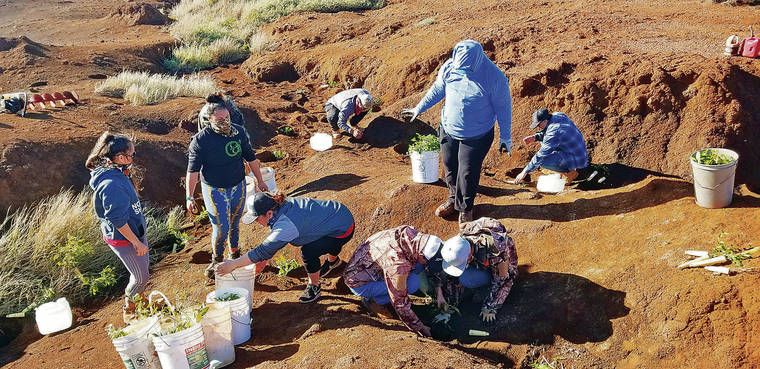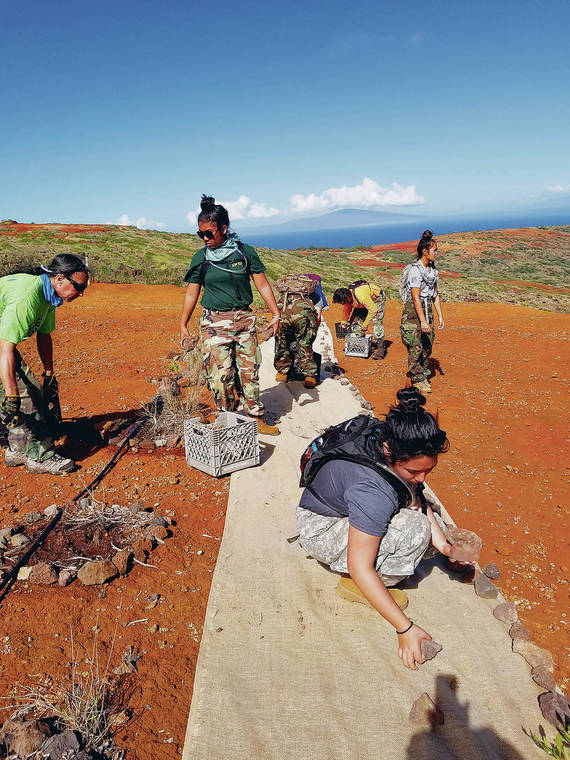Kahoolawe watershed rehabilitation project is bearing fruit

COURTESY KIRC
Students from King Kekaulike High School plant native flora, shrubs and trees at Hakioawa Watershed on Kahoolawe as part of a soil erosion control project, above.

COURTESY KIRC
Volunteers lay a bed of mulch and rocks for native plants at Hakioawa watershed on Kahoolawe.


The formerly bare, red-dirt slopes of Hakioawa watershed on the northern slopes of Kahoolawe island are now festooned with green through the labors of the Kahoolawe Island Reserve Commission and 199 volunteers from around the state.
August will mark the completion of a one-year watershed restoration project funded by a $50,000 grant received through the state Department of Health, Clean Water Branch, Polluted Runoff Control Program and U.S. Environmental Protection Agency, KIRC announced Tuesday.
Work at the 108.7-acre project site, which rises from 400 to 1,300 feet in elevation, focused on soil erosion control through planting native flora and removing non-native weeds.
Every year, KIRC said, an estimated 1.9 million tons of soil has eroded from Kahoolawe, its native habitat severely damaged by its former uses as a site for ranching, grazing goats and a U.S. military bombing range.
The danger of unexploded ordnance posed a special challenge at Hakioawa: No digging allowed.
“In this area, 90 to 95 acres were just surface-cleared of ordnance,” said Paul Higashino, KIRC natural resource specialist. “We put in 20,000 plants without digging a hole.”
Don't miss out on what's happening!
Stay in touch with breaking news, as it happens, conveniently in your email inbox. It's FREE!
The drought-resistant native plants included a variety of shrubs, ground cover and trees, such as aweoweo, aalii, kawelu, naio, wiliwili, ohai, uulei, mao and akiaki, a native coastal grass.
Volunteers contributed more than 3,000 hours and moved 120,000 pounds of rock “all by hand, taking care not to pick up rocks from cultural sites, or artifacts,” Higashino said. They constructed wattles — soil erosion control devices that also conserve water and serve as raised planting beds — by encasing rocks, soil and mulch with burlap. They also laid irrigation lines to the plants, fed by solar water pumps from holding tanks in a catchment area.
Now the plants are flowering and putting out seeds, as well as leaf litter, Higashino said with a laugh.
He added that slowing erosion also reduces runoff and sedimentation in the ocean habitat.
Kahoolawe remains harsh, windblown and dry. A week after leaving the island, “You can feel the grit in your hair and your ear a week later,” Higashino said.
But you also remember “beautiful views of Maui and the ocean, and when whales are there you can hear them slap the water with their tails.”
For more information call 243-5020 or visit kahoolawe.hawaii.gov Opens in a new tab.



